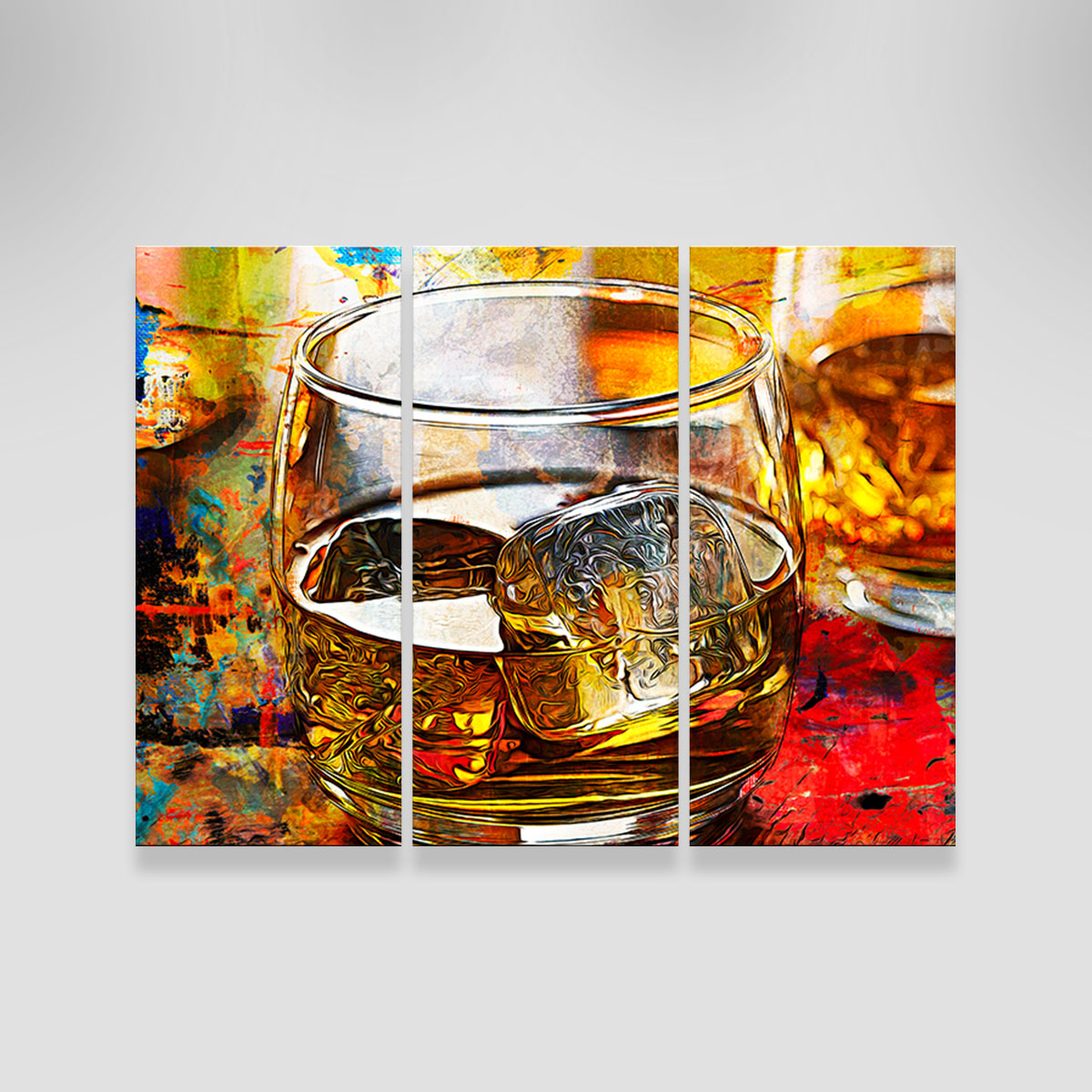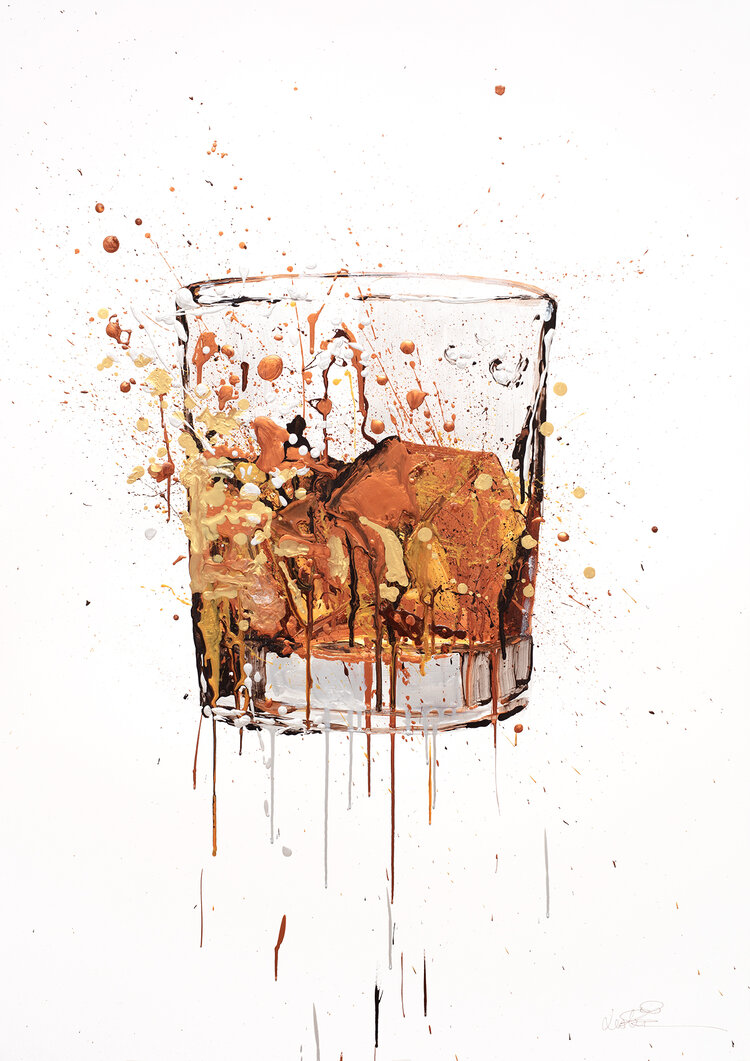Limited Edition Bourbon Art: Why Collectors Are Gathering to Unique Finds
Wiki Article
Catching the Essence of Whiskey Art Through Distinct Visual Depictions and Designs
The art of scotch prolongs beyond the liquid itself, showing up with a range of visual depictions that encapsulate its fabled heritage and craftsmanship. What stays to be revealed is how these advancing designs show not only the bourbon itself however also the transforming landscape of imaginative analysis. Realism Art.The Background of Whiskey Art

As whiskey manufacturing spread, so too did the wish to boost its experience with art. From the complex engravings on early barrels to the intricate tags of contemporary bottles, each component shows a special creative vision, serving as an aesthetic story of the whiskey's heritage.
In the 19th and 18th centuries, the rise of the industrial revolution better boosted whiskey art, resulting in cutting-edge packaging and advertising that captured consumer interest. Artists and designers started try out aesthetic appeals, imbuing whiskey-related imagery with symbolic meanings that communicated concepts of workmanship, tradition, and neighborhood.
Today, whiskey art proceeds to evolve, blending traditional methods with contemporary art forms. Bourbon Art. This ongoing discussion between the spirit and its graph emphasizes the long-lasting bond in between bourbon and culture, enriching the total experience for fanatics worldwide
Iconic Container Designs
While many factors add to the appeal of whiskey, legendary container styles play an essential duty in shaping customer assumption and enhancing the total experience. The aesthetic presentation of whiskey bottles is not simply an aesthetic factor to consider; it serves as a bridge between the item and the consumer, stimulating emotions and establishing expectations.Distinct shapes, materials, and closures can boost a whiskey brand's identification, making it quickly well-known on jampacked shelves. For example, the traditional Glenfiddich container, with its stylish conical shape, communicates a sense of practice and workmanship, while the vibrant, modern-day layout of the Balvenie bottle shows innovation and refinement. The use of colored glass or special structures can recommend the top quality and personality of the scotch within.
Legendary styles frequently incorporate elements of social heritage, signifying the brand's history and connection to its origins. Brands like Jack Daniel's utilize a straightforward, durable layout that reverberates with its American scotch heritage. Eventually, the impact of bottle style expands past mere functionality; it envelops the significance of the brand name, inviting consumers to discover and delight in the abundant tapestry of whiskey society.
Label Art Work and Branding
Bottle styles commonly establish the stage wherefore customers can expect, however label art work and branding play a similarly substantial role in communicating a bourbon's identity. The tag works as the initial factor of call in between the consumer and the product, enveloping the significance of the bourbon within its aesthetic aspects.Effective tag art work combines color, typography, and imagery to produce a story that resonates with the brand's heritage and target market. A label featuring classic fonts and intricate pictures might stimulate a sense of practice and craftsmanship, appealing to connoisseurs. On the other hand, strong colors and modern-day layout components could attract a younger market looking for development and excitement.


Photography and Visual Narration
Catching the essence of bourbon through photography and aesthetic storytelling is an art type that useful content boosts the brand name experience. This tool transcends mere item depiction, diving into the detailed stories that surround each container. By employing engaging imagery, photographers can stimulate feelings that resonate with consumers, ultimately forging a much deeper connection to the whiskey brand name.Aesthetic storytelling in scotch digital photography commonly makes use of rich structures, lighting, and make-up to highlight the one-of-a-kind characteristics of the spirit. The interaction of light and shadow can highlight the amber tones of whiskey, while the selection of background elements-- such as rustic barrels or elegant glass wares-- can strengthen the brand's heritage or way of living organizations.
Furthermore, catching the ceremonial facets of whiskey usage, from the putting to the sampling, welcomes audiences into a sensory experience, enabling them to picture the flavors and fragrances that await. Each picture not just showcases the item yet additionally narrates of craftsmanship, tradition, and the moments that bourbon can enhance - Limited Edition. Thus, digital photography ends up being an effective tool in expressing the identification of bourbon brands, placing them within the more comprehensive cultural landscape
Emerging Trends in Whiskey Art
The advancement of scotch art is significantly formed by contemporary fads that show wider social changes and consumer choices. This shift not just highlights the importance of sustainability however also boosts the narrative surrounding bourbon manufacturing.Furthermore, electronic art has risen in appeal, enabling innovative representations of whiskey. Artists are leveraging innovation to craft immersive experiences, such as augmented truth installations that engage visitors and give a much deeper understanding of whiskey's social value. This trend also expands to social media sites my explanation platforms, where visually striking content amasses interest and cultivates area amongst enthusiasts.
In addition, cooperations between bourbon brand names and musicians are ending up being a lot more typical. These partnerships produce limited-edition packaging layouts and special artworks that celebrate both the craftsmanship of bourbon and the creativity of artists. As whiskey art continues to progress, these emerging trends will undoubtedly shape its future, cultivating a vibrant crossway of culture, sustainability, and innovation within the scotch area.
Conclusion
Finally, the art of bourbon incorporates a diverse array of visual representations that mirror its abundant heritage and workmanship. From iconic bottle styles and intricate label artwork to compelling photography, each component adds to a more comprehensive narrative that boosts the customer's experience. As emerging fads, such as digital art and sustainability, remain to form this imaginative landscape, the multifaceted identity of whiskey stays a sustaining resource of cultural link and exploration.

In verdict, the art of whiskey incorporates a varied range of aesthetic depictions that reflect its abundant heritage click reference and craftsmanship.
Report this wiki page